Original Title: "Opinion: Public Companies Raising Funds to Buy Bitcoin is 'Toxic' Leverage"
Original Author: lowstrife, Crypto KOL
Original Translation: Felix, PANews
Recently, Bitcoin reserve companies like MSTR, Metaplanet, Twenty One, and Nakamoto have gained significant attention. However, I believe their "reserves" represent a destructive leverage, the worst thing that has happened to Bitcoin and what it stands for. Below is an analysis of how this model could collapse under certain conditions.
The feedback loop used by these companies involves purchasing Bitcoin with company funds, accounting for it on the balance sheet, and then leveraging various corporate mechanisms to raise more funds based on that balance sheet. This model is often praised as the greatest invention of all time.

Funds raised through methods such as issuing new shares (ATM), bonds, preferred stocks, and loans are immediately used to purchase Bitcoin, driving this flywheel. An important distinction here is the use of appreciation leverage: companies like Tesla simply deposit assets into Bitcoin (which is not disputed by individuals).

But the key to this flywheel is that common stockholders are the ultimate holders of these financial assets. All these fundraising mechanisms ultimately lead to the dilution of common stock, selling shares into the market to fund this flywheel. The primary method used by MSTR is issuing new shares (ATM) to achieve appreciation dilution. If mNAV (PANews note: representing the current stock price relative to the value of Bitcoin it holds) is greater than 1.0, this method works well. But the problem is that this leverage relies on issuing new shares to meet its cash flow. If MSTR's stock price falls below 1.0 times mNAV (as it did in 2022), problems will arise.
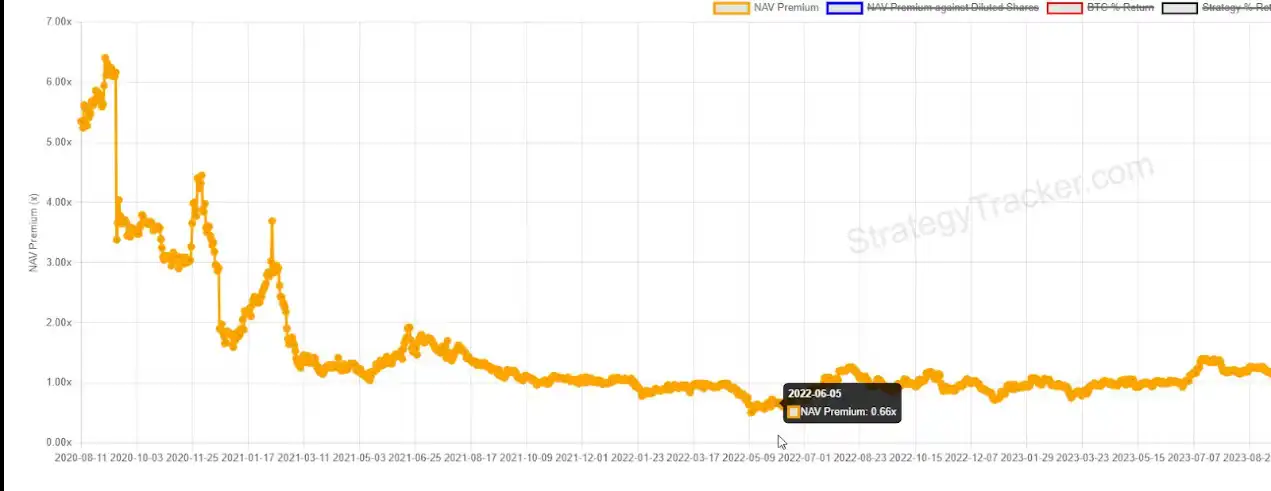
Another tool is leveraging to enhance the yield of its products, such as convertible bonds and perpetual preferred stocks. Because future buy-ins are anticipated, this accelerates the expected value of equity and initially amplifies the stock premium. Issuing more common stock dilutes existing shareholders' equity, and this leverage will eventually mature. However, they allow this dilution to occur later, exchanging today's dollars for tomorrow's cash flow/dilution, deferring this payment and "cost" to a distant future. It's quite "clever." There are two issues here: the first is that if the underlying stock fails to meet performance targets, these products cannot serve as the fulcrum for all leverage. For convertible bonds, MSTR must refinance or sell BTC to raise cash.
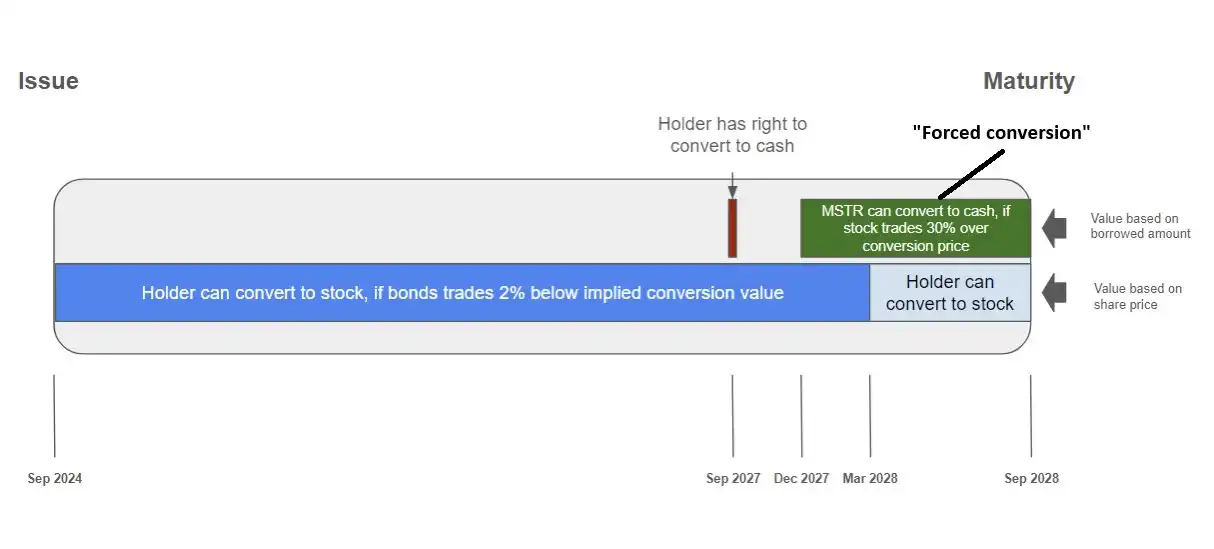
The second issue concerns preferred stocks. They require the payment of perpetual, non-appreciating dividends (i.e., interest) to the holders of this debt. MSTR plans to issue trillions of dollars of such securities, and these payments will come from the dilution of MSTR equity holders. Particularly, the Strategy's STRF (PANews note: a fixed-income product packaged as preferred stock issuance to easily and continuously raise funds to purchase Bitcoin) has no maturity date and acts as permanent debt with an annual interest rate of 10%. MSTR will forever rely on non-appreciating ATM, diluting shareholder equity to finance every dollar issued. Today's purchases come at the expense of tomorrow's shareholder interests. What does this sound like?
The problem with using ATM to provide the required cash flow is that it relies on mNAV, which does not stem from its own assets. It entirely depends on market sentiment: how much people believe the value of its treasury is. This is a blatant insult to the essence of Bitcoin. Although there are provisions for suspending dividends, this raises more issues. STRK must pay all unpaid dividends and penalties to convert (mature). Not to mention that suspending dividends would significantly reduce product demand.
If the meaning of income-generating assets is to strip away risk, the last thing one wants to see is the destruction of the original intent of holding that security. These risks are not mentioned by MSTR's proponents. Suspending dividends would serve as a warning about solvency. Supporters argue that the issuance of these preferred stocks is for the current purchase of Bitcoin, and that dividend payments are worthwhile. They believe that if it has already been "modeled," then raising funds is justified.
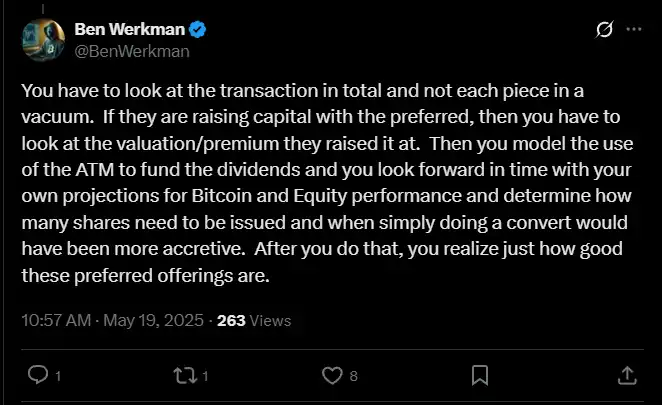
You must look at the transaction as a whole, rather than in isolation. If they are financing with preferred stocks, then you must consider their valuation/premium at the time of financing. Then, you can simulate using ATM to pay dividends and project the future based on your predictions of Bitcoin and stock performance, determining how many shares need to be issued and when conversion would be more value-enhancing. Once you do this, you will realize how good these preferred stock issuances are.
Currently, there are about $1.8 billion of such securities in circulation, and it is still possible to pay these amounts. But Saylor proposes to issue $30 trillion of such securities, requiring the dilution of $300 billion of shareholder equity annually, which is clearly untenable.
So how will all this explode? It all starts with mNAV, which is crucial. It is life, it is vitality. If there are issues with mNAV, the company's ability to raise funds will disappear, and debt conversion will impair mNAV, causing the company to lose its ability to repay debt.
GBTC is another closed-end fund that became popular during the 2021 bull market. People used it to invest in BTC because their existing accounts did not allow it at the time. Nowadays, the reason for buying MSTR is largely the same. The problem is that the channels for acquiring Bitcoin are increasing. GBTC is a closed-end fund that trades at a premium or discount to the underlying asset. Once the demand for this investment channel dries up, the demand for the fund to purchase new assets will also decrease.
Once mNAV is crushed, the demand will be gone.
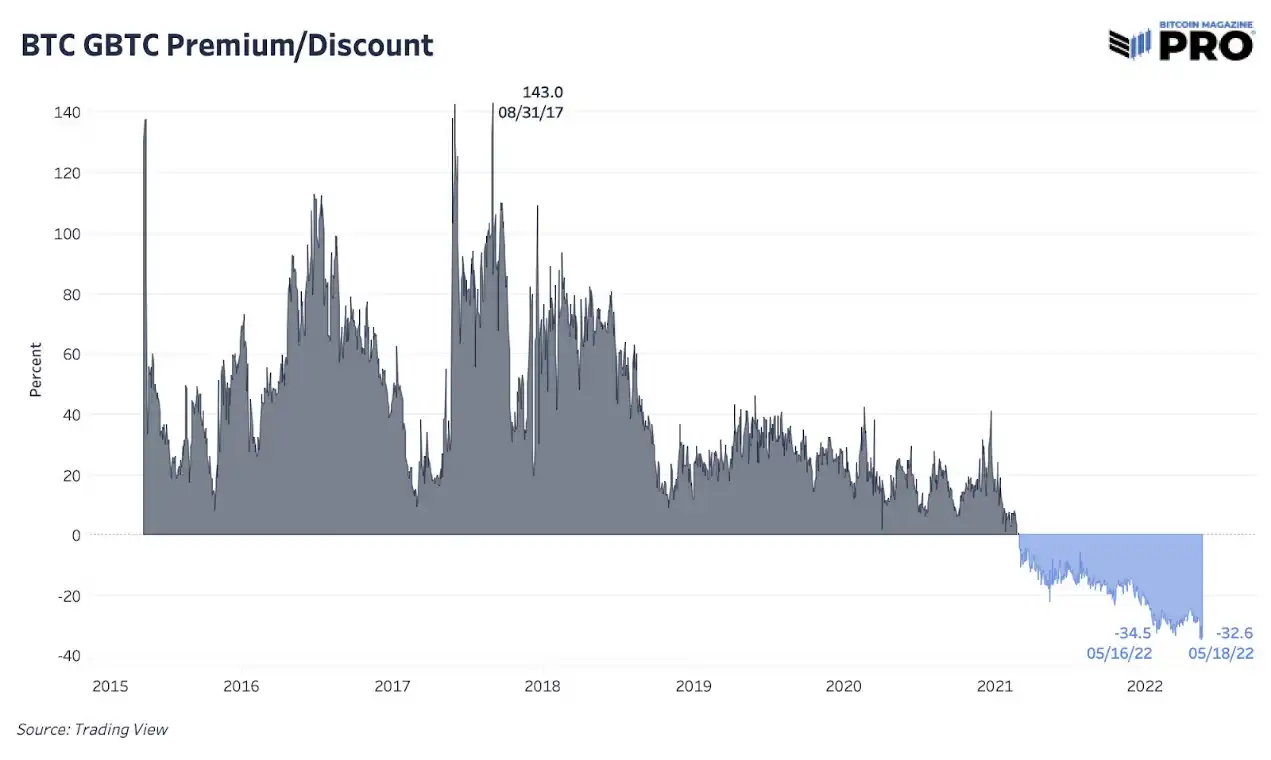
Once mNAV falls below 1.0, MSTR's fundraising ability will be in jeopardy, and its situation will be quite similar to the loss of willingness and ability to purchase GBTC. Notably, mNAV is entirely based on market sentiment. There is no mechanism or reason requiring it to trade according to asset value.
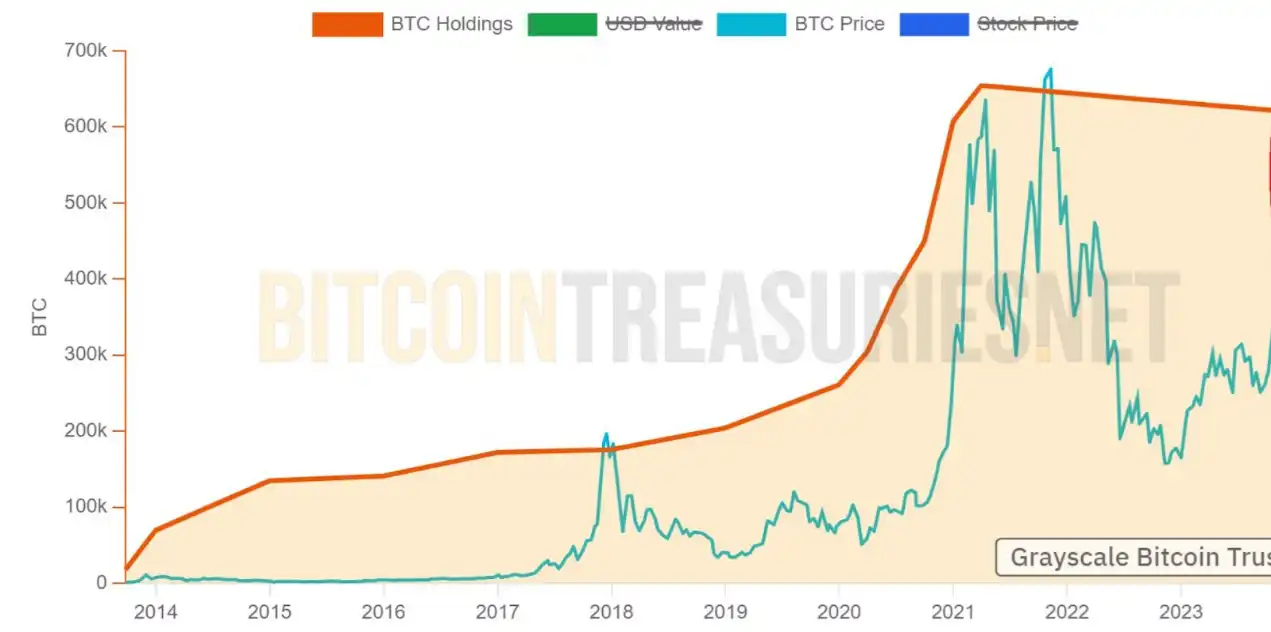
When mNAV declines, the ability to continue raising funds (and purchasing Bitcoin) in the future weakens, and the expected value of the stock will also decrease. If forced to issue debt dividends under adverse conditions, this situation could exacerbate. Convertible bonds complicate matters further. Currently, MSTR has $8.2 billion in convertible bonds maturing between 2028 and 2032. The risk of these bonds does not lie in their price; regardless of Bitcoin's price fluctuations (within a reasonable range), the bonds will not "blow up" or require margin calls.
The problem with convertible bonds lies in their name. They need to be converted. MSTR's stock must appreciate to a predetermined price level for the bonds to convert into new stock issuance. Remember: this trigger point is MSTR's stock price, which fluctuates based on mNAV, and mNAV is based on market sentiment. If for some reason the price fails to rise, the problem becomes a matter of time rather than price. Regardless of what the underlying price of Bitcoin is, the bonds may mature. MSTR must refinance or repay the debt in cash by selling BTC.
Ultimately, the flywheel mechanism will reverse, ultimately rendering the entire plan ineffective. Buying back shares below mNAV 1.0 and selling underlying assets to raise funds. Some argue that this constitutes a fiduciary duty, and Bailey has publicly stated he would do the same.

This is not a financial revolution. This is a Ponzi scheme enthusiast chasing leverage. Individuals have held Bitcoin for a long time, and it is heartbreaking to see Bitcoin OGs cheering for Saylor while he reenacts the financial engineering of 2008 with Bitcoin. It is important to remember that it was this very set of tactics that led to the birth of Bitcoin.
免责声明:本文章仅代表作者个人观点,不代表本平台的立场和观点。本文章仅供信息分享,不构成对任何人的任何投资建议。用户与作者之间的任何争议,与本平台无关。如网页中刊载的文章或图片涉及侵权,请提供相关的权利证明和身份证明发送邮件到support@aicoin.com,本平台相关工作人员将会进行核查。




